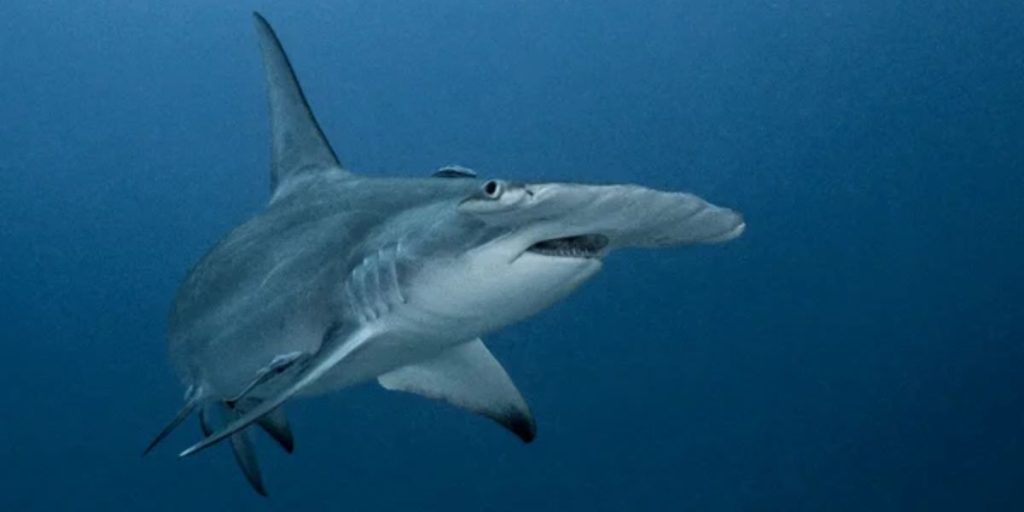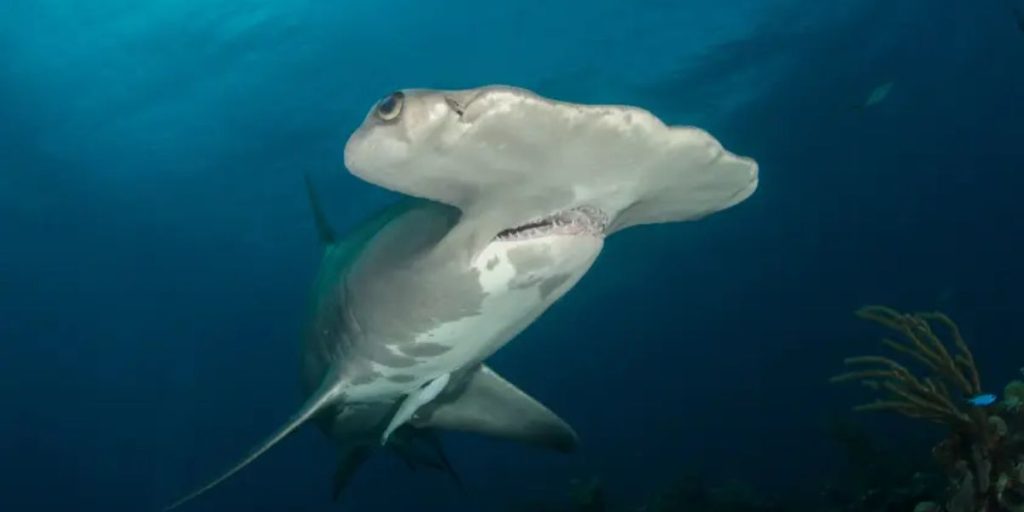For 35 years, Discovery Channel’s annual Shark Week has kept viewers enthralled with shows on our fishy, elasmobranch buddies. Unfortunately, Shark Week frequently does sharks (and humans) damage by disseminating a staggering quantity of erroneous or grossly false information, as a group of marine biologists discovered last year after watching every Shark Week episode ever broadcast.
This year, Discovery Channel maintained this terrible tradition by releasing “Cocaine Sharks” last week.
“Cocaine Sharks”
No doubt intended to mirror the viral success of Cocaine Bear, a film released earlier this year about a bear who goes on a murderous rampage after consuming a large amount of cocaine discarded in the woods, “Cocaine Sharks” represents an attempt to investigate whether sharks off the Florida Keys are getting high on and even addicted to cocaine dropped by drug smugglers in the coastal waters, potentially turning them hyperactive and aggressive.

For decades, newspaper reports have highlighted how bundles of cocaine wash up on Florida’s coastlines after allegedly being lost by traffickers. Fishermen have confirmed the reports, claiming that sharks bit into the bundles and became hyperactive and aggressive.
In “Cocaine Sharks,” marine biologist Tom Hird and environmental scientist Tracy Fanara collaborated to investigate whether these reports were true. They initially entered shark-infested seas off the Florida Keys and examined local lemon, sandbar, and hammerhead sharks, looking for any odd behavior that could indicate cocaine exposure.
This was a pointless exercise because cocaine is a relatively fast-acting and rapidly metabolized narcotic, thus they would never be able to definitively link any anomalous behavior to cocaine. After observing some “tweaked” behavior in a putative “junkie shark,” they ended their dive, later acknowledging that no one knows what a shark high on cocaine looks like.
Hird and Fanara then carried out an experiment in which they placed a few square, white bundles in the water to resemble cocaine bales. They placed a few plastic swans nearby to imitate a sleeping pelican, which could serve as prey for sharks. Would the sharks be more interested in the bundles or the swans, they speculated?
While the approach was not particularly thorough, the researchers discovered that the local sharks were more interested in the bundles, even taking a bite or two out of them. While Hird speculated that this could simply be because the bundles are a novel addition to their habitat, the experiment revealed that sharks may interact with floating cocaine bundles, potentially getting high and changing into “cocaine sharks.”
Related:
- This Florida Town is Named the “Sailfish Capital of the World”
- Chicago’s Best Restaurant Will Now Be Serving Korean Cuisine in Fusion with Hi-Fi Music
For fish, cocaine is an anesthetic.

But what does a cocaine shark actually look like? Cocaine operates on dopamine transporters in the brain, preventing the recycling of this “pleasure hormone” and allowing it to accumulate in synapses, giving feelings of euphoria and alertness but also potentially causing panic, hyperactivity, and even aggressiveness when eaten in large quantities.
Hird and Fanara threw a pile of dried fish powder into the water, implying that this delectable delicacy could replicate the effects of cocaine on sharks. The sharks felt thrilled when swimming through the fish powder, but it’s unclear whether cocaine would have the same impact.
Scientists had previously administered cocaine to zebrafish, a prominent animal model in the study, but it did not appear to have a significant influence on their behavior. Throughout “Cocaine Sharks,” viewers were repeatedly shown footage of jumping, hyperactive salmon in a tank and informed that they were high on cocaine. But this was deceiving.
The footage was taken at a German fish farm, where authorities discovered that the water tanks had been contaminated by a filthy creek nearby, causing distress in the fish. Cocaine and other substances were discovered in the stream, but not in the fish’s habitat.
For the finale of “Cocaine Sharks,” Hird and Fanara had a plane drop white bales of fish powder into the sea, generating a frenzy among the local sharks. Would a cascade of tightly wrapped cocaine packets elicit similar excitement? It’s tough to say for certain, but it’s improbable because there wouldn’t be anything appetizing for the sharks to sniff.
Hird and Fanara finish “Cocaine Sharks” by emphasizing the unfortunate fact that our seas have become dumping sites for a wide range of man-made pollutants, including illegal drugs, which are affecting creatures and ecosystems. They do not, however, conclude that “cocaine sharks” exist—most likely because they do not.
The amount of cocaine dropped off the Florida Keys is insufficient to hook the local fauna, and we have no idea whether it would get them high. According to the Palm Beach Post, Florida International University PhD student Laura Garcia Barcia stated, “A few studies done with cocaine shows that it affects fish really differently than humans.” It works as an anesthetic, not a stimulant.
With “Cocaine Sharks,” the Discovery Channel has recounted yet another dubious story.
Read More:
- 5 Neighborhoods in Florida Again Ranked the Worst in the 2024 Survey
- Real-life Annabelle Dolls Were Seen in Florida and Connecticut